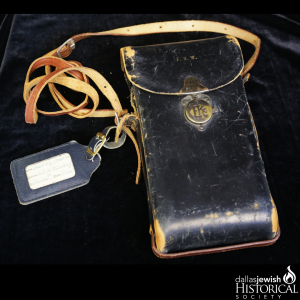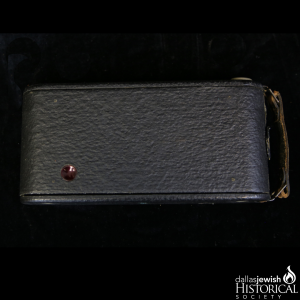by DJHS Archivist | Apr 20, 2020 | From the Archive |
Menashe Kadishman was born in August 1932, and died May 2015 at age 82. Kadishman was an Israeli painter and sculptor, and is known for his colorful sheep paintings and large metal sculptures; one of which is featured on the grounds of Yad Vashem Holocaust Museum in Israel. The Nasher Sculpture Center in Dallas has one of his sculptures, “Segments” from 1968, on display on the lawn.
From the Ginger Jacobs Collection

by DJHS Archivist | Apr 16, 2020 | From the Archive |
These four red ration coins from World War II were created by the Office of Price Administration, after the United States was attacked at Pearl Harbor.
“The functions of the OPA were originally to control money (price controls) and rents after the outbreak of World War II.” The tokens were used from 1942-1945, and each household would receive an allotted amount based on job, number of family members, ages, children, handicapped, and elderly. “Red OPA,’ used for meats and fats, are a lot more common than blue ones, which were used for processed foods.

by DJHS Archivist | Apr 14, 2020 | From the Archive |
This is a two way millinery form. With the starting hat size of 6 5/8 or 20 7/8 inches, it is the size of a youth’s hat. The middle bar rotates to open the form from both the top and bottom to create a bigger size, or for proper hat storage.

by DJHS Archivist | Apr 9, 2020 | From the Archive |
This Camp Wallace Wallet made of blue and green stamped leather, and bound with leather twine, in green, red, and white was donated by Alex Ray as part of the Ray Family Collection.
Camp Wallace was named after Colonel Elmer J. Wallace and opened on February 1, 1941. It was eventually used for training for antiaircraft units during World War II, and was used as a German Prisoner of War detention camp throughout the war.


by DJHS Archivist | Apr 7, 2020 | From the Archive |
This No. 3A Folding Pocket Ansco camera was purchased in Dallas and given as a gift to Frances Wolfe Garber “F.B.W”, as a Forest Avenue High graduation present in 1923.
Originally priced at $25.00 back in 1913, this camera was well worth the investment, as it was still operational in 1972 when Frances traveled with it to Israel. The camera features two tripod sockets, 3 1/4 x 5 1/2 inch film negatives, and the ruby window on the back of the camera indicates what number photo you’re on.
Donated September 11, 1995
Frances Wolfe Garber Collection










Recent Comments